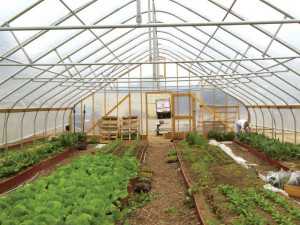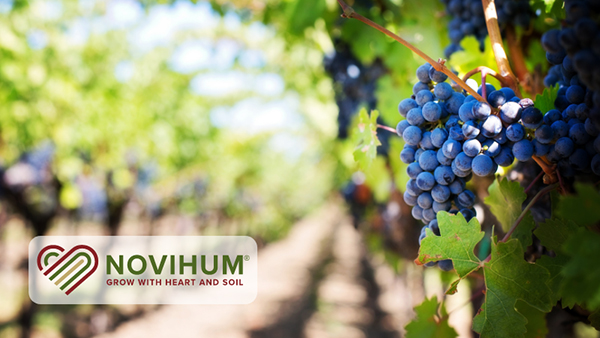High Tunnel Management Pointers For Vegetable Growers
Growers are using high tunnels to not only start the season earlier than the competition and later to extend the season, they are able to grow quality produce that can command a higher price. American Vegetable Grower had a conversation with Bill Lamont, who is associated with the Center for Plasticulture at Penn State University and a professor of vegetable crops, on some of the latest advancements in tunnel production, irrigation methods to use, construction pointers, and more.
Q1 What has been the biggest advancement in tunnel production recently?
Lamont: I believe that research on capturing the rainfall running off the high tunnels and using it for irrigation in the tunnel is certainly one of the latest initiatives that is bearing fruit. Also new ridge vent designs are another new area in ventilation. I think that more moveable high tunnel designs are in the pipeline.
Q2 Why is drip the preferred method of irrigation in high tunnels? Are there other methods that work?
Lamont: I certainly recommend using drip irrigation to growers. One reason that we use high tunnels is to keep the rain off the crops, which helps to lessen the disease pressure and helps to minimize damage from rain on the quality of the crops, such as rain cracking on cherries.

The vegetable crops in this high tunnel are being grown on raised beds.
Photo credit: Bill Lamont
Drip irrigation also uses less water and is very efficient in the delivery of water to the root zone of the crop. You can also inject fertilizer to the crops via the drip irrigation system on an as-needed basis.
Q3 Why is it so important to choose the proper site and construction material for the high tunnel?
Lamont: If you make bad choices on these two items, you will be fighting the high tunnel forever. A level site is always the best and we suggest orienting the high tunnel so the prevailing winds blow through the roll-up sides. Also a tall-sided high tunnel gives you more area to work in and greater opportunity for ventilation.
We also recommend a high tunnel with a peak in areas of snow. If you have a wide, say 30-foot quonset with a single layer of plastic and you get a heavy snow, there is a good chance that it will collapse under the weight of the snow since there is a flat area on top.
Q4 What vegetable crops have growers been experimenting with recently?
Lamont: I believe that growers have been trying a wide range of crops: vegetables, small fruits, tree fruits, and flowers in high tunnels. I have always said that it is the market that determines whether a grower makes money or not. If a person is a good grower, the market is the determining factor. I may be able to sell beets at the farmers’ market and make money where another person may be selling peppers.
Q5 Do you recommend shaping and covering beds with plastic mulch or cutting holes in ground cloth to reduce the incidence of weeds? What are the advantages and disadvantages?
Lamont: I prefer covering raised beds with plastic mulch and having drip irrigation in the bed. You can use straw or other materials between the beds for weed control. The key is to have the plastic mulch in tight contact with the soil so as to get the maximum warming of the soil. That is why it is hard to get the benefit from plastic laid across the entire inside of the high tunnel because it just isn’t in good contact with the soil. We have used ground cloth in between our raised wooden beds to keep the weeds down.
Q6 What are the best control options in high tunnels for diseases and insects?
Lamont: Using biocontrols really works for controlling insect pests in the high tunnels. You have to get used to it and be thinking ahead of the insect pests with your predatory insects. We have used it for years at our facility at Penn State. Some insect predators such as lacewings tend to gravitate to the high tunnels. It takes some training to recognize the different life stages of both the pest and the predators.
The best control for diseases is sanitation, sanitation, and more sanitation.
Here are nine pointers from Lamont on how to get the most from your high tunnels:
1. Decide what production system you want to use: organic or conventional or a combination of the two.
2. Use biocontrol to have the best advantage.
3. Use drip irrigation and the option to inject soluble fertilizers.
4. Practice excellent sanitation in and around the high tunnel.
5. Use compost but limit the amount and also make sure that you
know the feedstock and analysis of the compost.
6. Make use of row covers and thermal blankets for additional cold protection.
7. Use plastic mulch to warm the soil and help with weed control. Raised wooden beds work well in tunnels.
8. Employ good cropping principles such as crop rotation, cover crops, etc.
9. Remember that even though you can grow almost anything in a high tunnel, you must be able to sell it and make a profit. So, have a market for the produce to be grown in the tunnel before planting.












